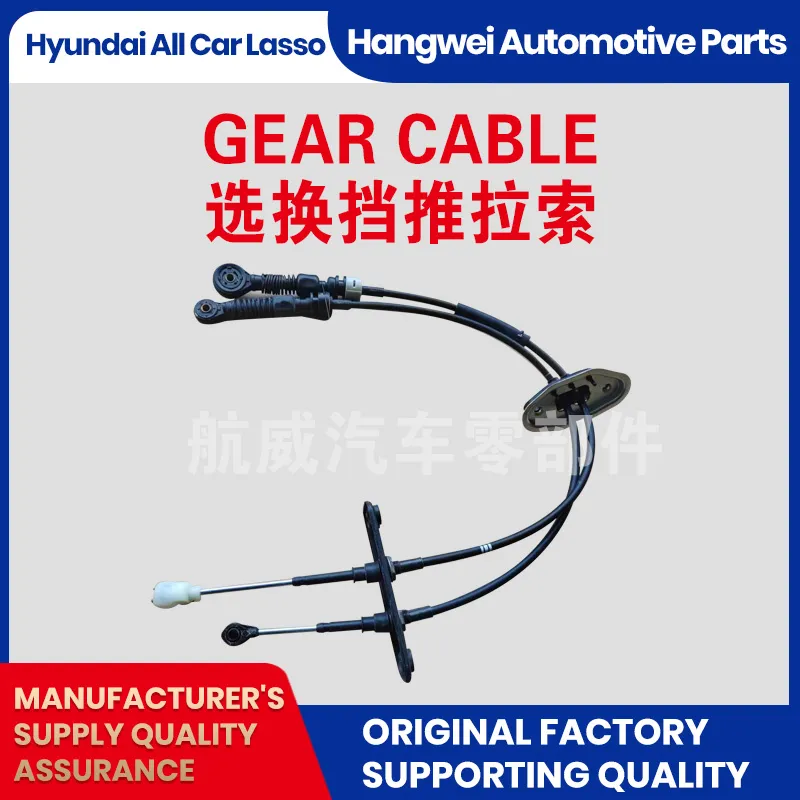manual throttle cable
Understanding Manual Throttle Cables A Comprehensive Overview
In the realm of automotive engineering, the throttle system plays a crucial role in controlling the air intake into an engine, directly influencing its performance and responsiveness. Among the various types of throttle control mechanisms, manual throttle cables remain a significant and often overlooked component. This article will delve into the importance of manual throttle cables, their functioning, and maintenance tips.
What is a Manual Throttle Cable?
A manual throttle cable is a mechanical component that connects the accelerator pedal to the throttle body of an engine. When a driver presses the accelerator pedal, the cable pulls on the throttle body, allowing air to enter the engine and increasing its power output. Unlike electronic throttle control systems, which rely on sensors and electronic signals, manual throttle cables provide a direct physical connection, offering a tactile feedback that many drivers appreciate.
How Do Manual Throttle Cables Work?
The operation of a manual throttle cable is straightforward yet fundamental to the vehicle’s performance. The throttle cable consists of a flexible cable encased in a protective housing. When the accelerator pedal is depressed, the cable slides within the housing, transmitting the force directly to the throttle linkage on the engine.
This mechanical connection allows for real-time and direct control of the engine's power output. Since there are no electronic components involved, the manual throttle response is immediate, making it a preferred choice for many performance vehicles and older models where simplicity and reliability are paramount.
Advantages of Manual Throttle Cables
1. Simplicity and Reliability One of the most significant advantages of manual throttle cables is their straightforward design. With fewer components that can malfunction, they tend to be more reliable over time compared to complex electronic throttle systems.
2. Enhanced Driver Feedback Manual throttle cables provide a direct connection between the driver’s input and the engine’s response. This feedback can lead to a more engaging driving experience, especially in performance applications.
manual throttle cable

3. Easy Maintenance Manual throttle systems are often easier and less expensive to maintain. If a cable becomes frayed or damaged, it can generally be replaced without requiring extensive diagnostic tools or electronic troubleshooting.
Maintenance of Manual Throttle Cables
Regular maintenance of the throttle cable is essential to ensure optimal performance and longevity. Here are some tips to keep your manual throttle cable in good condition
1. Inspect for Wear and Damage Regularly check the cable for signs of wear, fraying, or corrosion. Any visible damage might affect performance and should be addressed promptly by replacing the cable.
2. Lubrication Occasionally lubricate the cable to ensure smooth operation. Use a suitable lubricant to prevent stiffness, which can lead to delayed throttle response or binding.
3. Adjustment To maintain the required tension in the throttle cable, periodic adjustments may be necessary. Ensure that there is minimal slack in the cable while allowing free movement of the throttle mechanism.
4. Check Mounting Points Inspect the mounting points where the cable connects to the throttle and accelerator pedal. Loose connections can lead to imprecise throttle response, affecting vehicle control.
Conclusion
In conclusion, while modern vehicles increasingly rely on electronic throttle control systems, manual throttle cables continue to hold an important place, particularly in performance and classic cars. Their simplicity, reliability, and direct feedback make them a favored choice among enthusiasts and purists. As automotive technology advances, understanding the role of manual throttle cables reinforces the importance of maintaining these vital components to ensure optimal vehicle performance. Whether you are a car enthusiast, a mechanic, or just someone interested in how vehicles operate, recognizing the significance of manual throttle cables can enhance your appreciation for automotive engineering.
-
Workings of Clutch Pipe and Hose SystemsNewsJun.04,2025
-
The Inner Workings of Hand Brake Cable SystemsNewsJun.04,2025
-
The Secrets of Throttle and Accelerator CablesNewsJun.04,2025
-
The Hidden Lifeline of Your Transmission Gear Shift CablesNewsJun.04,2025
-
Demystifying Gear Cables and Shift LinkagesNewsJun.04,2025
-
Decoding Clutch Line Systems A Comprehensive GuideNewsJun.04,2025
